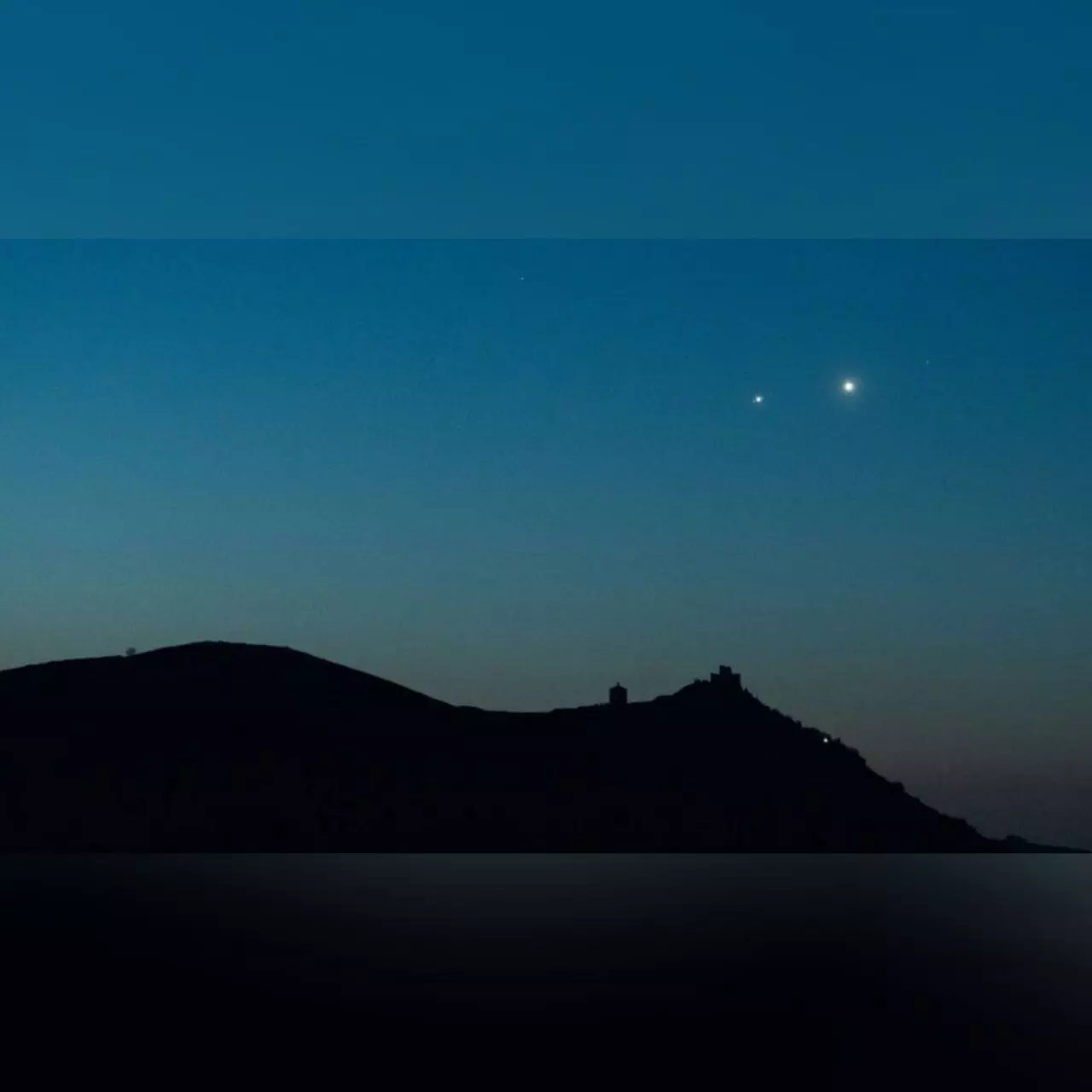Venus, Jupiter, Crescent: Get ready for celestial spectacle
The pair will be visible in the twilight sky on March 1, leading up to the true time of conjunction early on March 2nd, after the planets have set.
By Anoushka Caroline Williams
Representational Image
Hyderabad: March begins with a tight conjunction of two bright naked-eye planets: Venus and Jupiter. The pair will be visible in the twilight sky on March 1, leading up to the true time of conjunction early on March 2nd, after the planets have set.
Keen sky-gazers can begin watching Venus shortly before sunset on Wednesday since it will begin to shine out against the backdrop sky even before the Sun sets. Around sunset, the bright (magnitude -3.9) planet appears about 30° above the western horizon and has dropped to half that altitude an hour later. Jupiter appears just 30' to the top left (southeast) of Venus; at magnitude -2.1, it should visible shortly after sunset, even if the sky is still bright.
Both are sufficiently bright to be seen with the naked eye. If you want to employ magnification, wait until the Sun has completely set from your observing location before looking through binoculars, a telescope, or any other optical device.
However, once the Sun has dropped below the horizon, you can safely admire the pair through binoculars or a telescope. Any telescope will provide a good view, and observing while the sky is still light will keep Venus' brilliant glare from overwhelming the image. To comfortably capture both planets at the same time, use modest magnification and a field of view of roughly 1° across. A vista like this provides a unique perspective on the construction of our solar system and the worlds inside it.
Let's begin with Venus. The Earth-sized planet measures around 12" across and has an 86-percent-lit gibbous phase rather than a complete face. Because of its position between Earth and the Sun, Venus is regarded as a lesser planet. As a result, as seen from our planet, it goes through distinct phases.
Jupiter, on the other hand, is 34" across – three times the width of Venus, but is nearly five times farther away from Earth. (Jupiter is approximately 537 million miles [864 million kilometers] away, whereas Venus is only 127 million miles [204 million kilometers] away.) Even at such a great distance, the size discrepancy highlights the fact that Jupiter is the largest planet in our solar system, measuring 11 times the diameter of Earth (and thus, Venus, whose diameter is about 0.95 Earth).
Three of Jupiter's four biggest moons surround it. Io (the nearest to Jupiter), Ganymede, and Callisto appear in a line to the planet's east. Throughout much of the evening, Europa, the fourth Galilean moon, is buried behind the planet. It appears from behind a limb shortly before 8 p.m., after the sun has set. Even yet, Europa remains invisible, hidden inside Jupiter's vast, black shadow flung out into space. The moon will not leave that shadow until around 7:10 when it will reappear some 15' east of the planet's limb to join its companion moons.
The formal moment of conjunction comes on March 2nd, at 6 a.m. when Venus crosses 0.5° due north of Jupiter. But, the pair can be seen again at sunset that evening, with Venus to the upper right (northwest) of Jupiter. The two planets are still close enough to capture in a single low-power field of view with a telescope (just under 1°), and all four of Jupiter's moons are visible tonight.
“Even with light pollution, you cannot miss Venus and Jupiter. They are so bright. Look west just after sunset (i.e., just look where the sun has just set), from a point where that direction is not obstructed by trees or buildings or anything else. In fact today, the crescent moon will also be set around that time,” said Pankaj Sethi, Senior Member of the Federation of North Eastern Colonies of Secunderabad.
“You will see two bright points just above the moon. The lower one is Venus. The upper one is Jupiter. As you can see, all planets are in the same line (plane) - the plane of the sun. Neptune (lower than Venus), Uranus (close to the zenith - overhead), and Mars on the eastern side of the zenith. Mercury and Pluto would have already set by then. The planets revolve around the sun. So they always appear to be in the same plane as the sun, when viewed from earth. If you follow the imaginary plane with your eyes so that you look slightly east of the zenith (zenith = directly overhead) Mars should also be visible as a red dot,” he added.